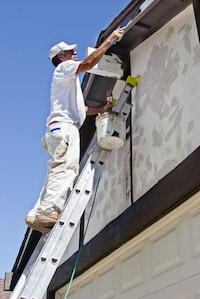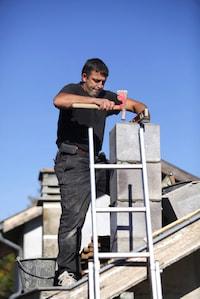Ladder Injuries

Ladders are used by people at home and in all types of employment settings, not just on construction sites. Consequently, the Department of Labor and Industries, which was given the authority by the Washington State Legislature to adopt and enforce safety and health regulations for every place of employment in the state (except those involving federal workers, involving federal land, or involving the water or the waterfront), has adopted a generic set of ladder regulations that apply to all job sites, not just to construction sites. The Washington Administrative Code, where all safety and health regulations are published, contains an entire chapter of ladder regulations, including 48 distinct sections that address everything from how a ladder is to be constructed to how a ladder is to be maintained to how a ladder is to be set up to how a ladder is to be used. WAC 296-876-099 through WAC 296-876-900.
There are essentially two different types of ladders: (1) portable ladders and (2) fixed ladders. Each presents workers with the same hazard: injuries sustained when falling off of the ladder. Workers fall off of ladders for a variety of reasons, but the primary reasons are as follows:
- the portable ladder shifts or falls over because it was not properly set up for the job;
- the portable or fixed ladder falls apart because it was not properly maintained or repaired;
- the portable or fixed ladder falls apart because its weight limit was exceeded; and
- the worker was not properly ascending or descending the portable or fixed ladder in a safe manner.

Each of these perils is addressed by one or more of the DLI safety regulations. For instance, to prevent inadvertent movement, the bottom of portable ladders must be placed on an absolutely stable, level, and slip resistant surface – or the top and bottom of the ladder must be tied or otherwise secured in place. WAC 296-876-40015. Likewise, even if the bottom of ladder is placed on an absolutely stable, level, and slip resistant surface, if the ladder is being used in an area where other people or equipment are nearby and might bump into it, the ladder must be tied or otherwise secured in place. Alternatively, barricades must be placed around the ladder to prevent inadvertent contact between the ladder and passersby. WAC 296-876-40010.
To prevent ladders from falling apart during use, DLI has established a series of specific ladder design, inspection, repair, storage, and transport regulations that all employers must follow. WAC 296-876-20005 through WAC 296-876-30020. Additionally, employers and workers are obliged to adhere to the ladder manufacturer’s specified weight limit ratings and not overload and thereby structurally weaken the ladder. WAC 296-876-40005.
To prevent workers from falling due to improper climbing techniques, DLI requires all employers to train employees proper climbing techniques before allowing employees to use a ladder. WAC 296-876-150 through WAC 296-876-15005. Each employee is to be trained to do the following:
- carry nothing in the hands so that both hands are free to hold onto the ladder;
- face the ladder at all times when climbing or descending;
- keep the ladder free of oil, grease, or other slippery substances; and
- keep the areas around the bottom and top of the ladder clear.
- WAC 296-876-40025.
To further protect workers from the risk of falling from a ladder, any time a worker is required to stand on a ladder at a point 25 or more feet above the ground, or use both hands to do something other than hold onto a ladder when 25 or more feet from the ground, the ladder must be secured or tied off at the top and bottom of the ladder, and the worker must be wearing a lanyard and safety harness that will safely arrest a fall from the ladder. RCW 296-876-40040.
Ladder-related injuries can happen on a job site anywhere in Washington State — in Seattle, Tacoma, Olympia, Bellingham, Marysville, Everett, Centralia, Longview, Vancouver, Ellensburg, Wenatchee, Yakima, Richland, Walla Walla, Spokane, and all points in between. The lawyers at Kraft Davies Olsson PLLC have successfully handled ladder injury cases for injured workers. If you or a loved one has suffered a ladder-related injury while working at a construction site, please call us at 206.624.8844 for a free consultation.







